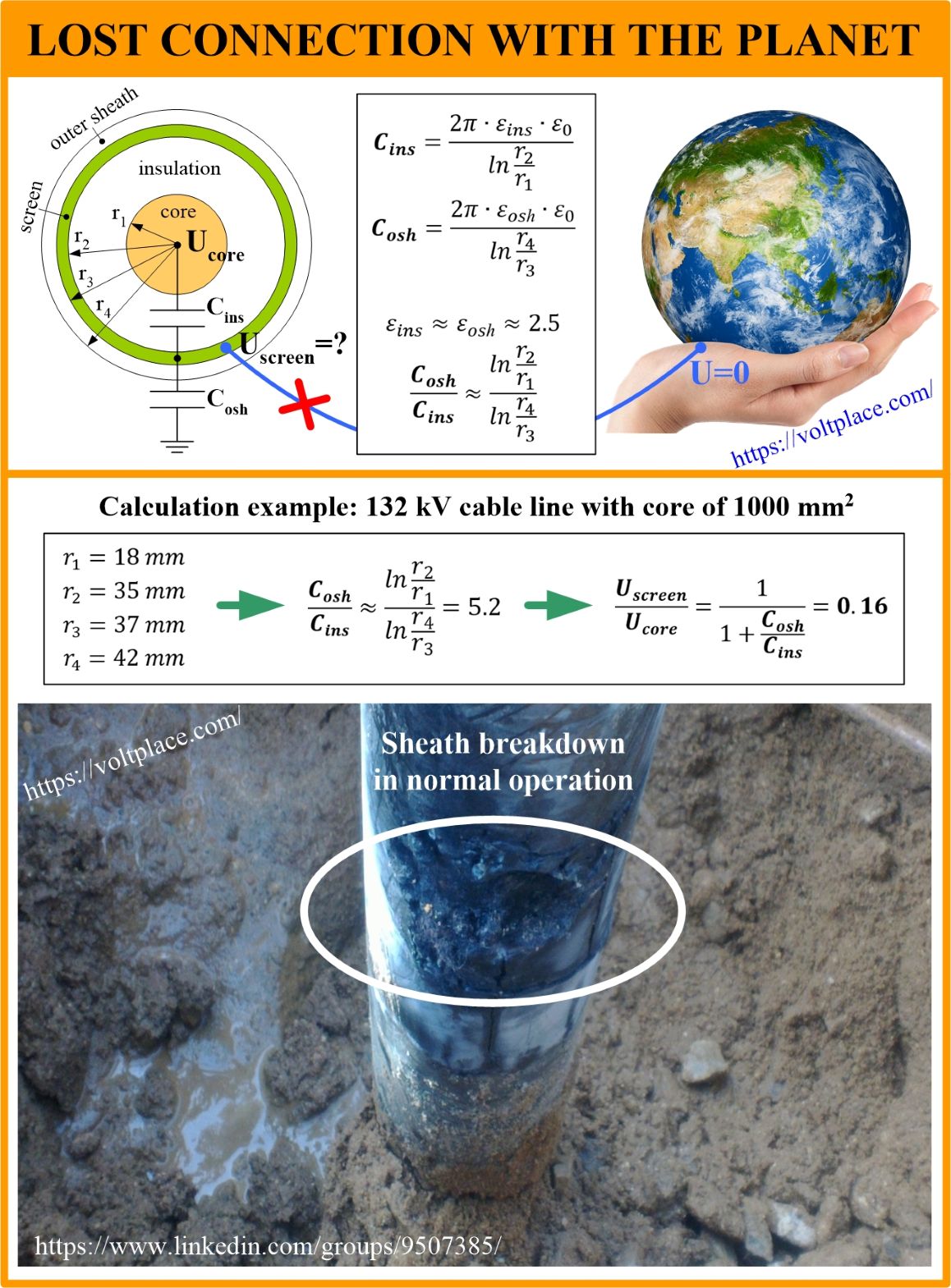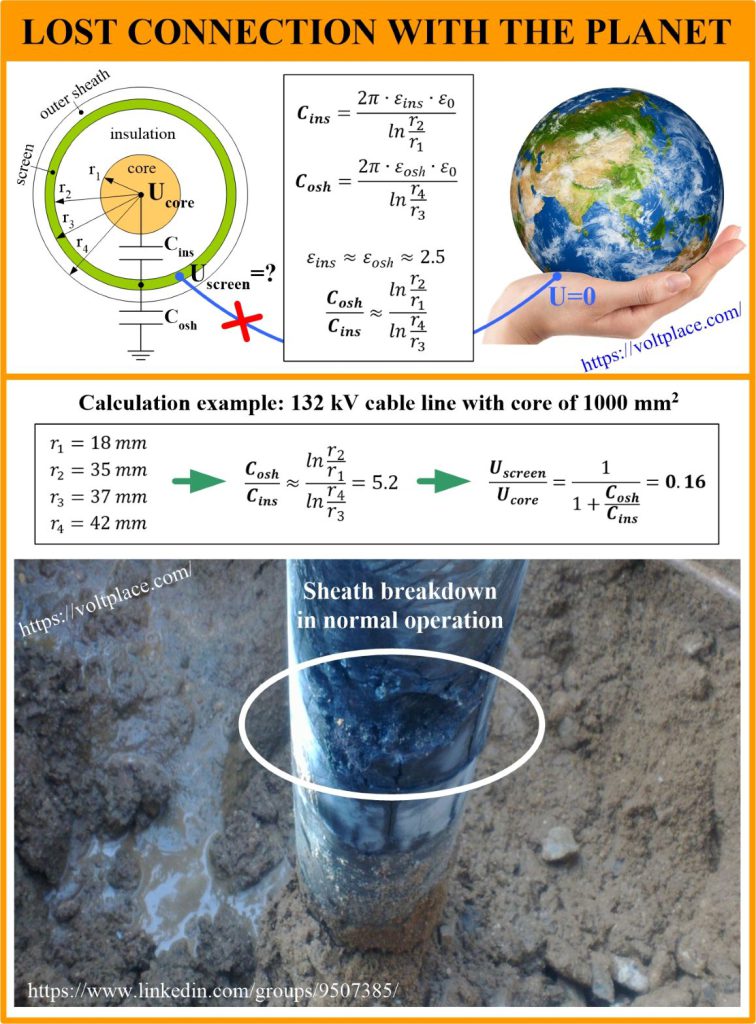
Ungrounded cable screen
Before putting the cable line into operation (and then periodically during operation), the integrity of the outer sheath of cables should be checked. The procedure consists of the following steps:
1️⃣ Disconnect the line from the network (if it was in operation).
2️⃣ Disconnect the SVLs from the link boxes.
3️⃣ Unground cable screens at both sides of the line.
4️⃣ Apply a DC voltage of 10 kV (it may be less) between the screen and the ground, for a period of 1 min.
5️⃣ Return SVLs and screens’ grounding back, per project.
6️⃣ Turn the line on under AC 50 Hz operating voltage.
Unfortunately, there are cases when, after testing the sheath, the staff forgets to ground the screens (point 5️⃣). As a result, AC 50 Hz operating voltage is applied to the cable, the screen of which is completely ungrounded.

AC 50 Hz voltage that will arise on the screen is determined by the ratio of the capacitances of the insulation (Cins) and the outer sheath (Cosh). As an example, it is shown that for a 132 kV line, the voltage on the screen is about 0.16 of the voltage on the core. If the voltage on the core is 132kV/1.73 =76kV, then the voltage on the screen is 76kV*0.16=12 kV (rms, AC 50 Hz).
Voltage of 12 kV is not so high that it is guaranteed to breakdown the outer sheath of the 5-6 mm thick. However, the cable shown was not lucky and got a breakdown, and this happened on a vertical section of the route near the place where it came out of the ground into the open air.
AC 50 Hz voltage on the ungrounded screen will increase compared to the calculated value (0.16), if the cable line has sections on which cables:
✅ laid not directly in the ground, but in the ground in pipes.
✅ laid above the ground on structures.
The fact is that in these two cases, the capacitance between the screen and the ground will no longer be equal to the capacitance of the outer sheath (Cosh), but will be noticeably less. It is better to calculate such a capacitance in software like EMTP. However, as a first approximation, the “screen-ground” capacitance can be obtained using the formula (Cosh) given here, if instead of the radius r4 of the cable, we will use respectively:
✅ external radius of the pipe (half of pipe’s diameter).
✅ double distance from the cable to the surface of the ground.
If “screen-ground” capacitance decreases (since the “ground” is moving away from the cable, due to laying in pipes or on structures), then the ratio Uscreen/Ucore increases. For example, instead of 0.16 we can have:
✅ up to 0.5-0.6, if the line is entirely laid in pipes.
✅ up to 0.8-0.9, if the line is above ground on structures.
Thus, the task of accurately determining the AC 50 Hz voltage on the screen (if it was forgotten to be grounded) must be solved, taking into account all cable laying methods found along the line. However, the main thing is clear – the AC 50 Hz voltage on the screen may damage the cable.
In fact, there could be many scenarios, and not only cable sheath damage. For example, AC 50 Hz voltage might damage a sheath voltage limiter (SVL) first, which, after its overheating and burnout, would shunt cable sheath and safe it. However in today’s case it is cable sheath itself that was damaged.
You can discuss this and many other issues in LinkedIn cable group. Your opinion is important for the cable industry! Thank you
